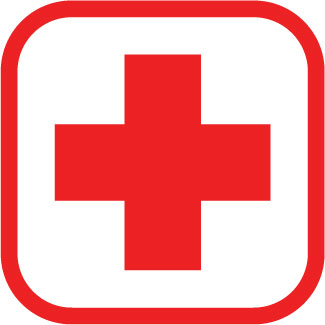Earthquakes will happen. We could be days without power and weeks without water. Roads will be blocked by a combination of collapsed infrastructure and millions of people trying to evacuate at the same time. What you do now will make a huge difference then.
Authorities have notified us that we should not expect any outside emergency help. In a disaster, emergency responders follow the principle of choosing to provide the most help to the most people. Not only will Woodside Fire be completely overwhelmed, but any outside agencies will be focusing on the more densely populated areas.
Earthquake Safety
.png) Stay Safe During an Earthquake
Stay Safe During an Earthquake
- Drop, Cover, and Hold on--In most situations, you will reduce your risk of injury if you immediately drop to your hands and knees, crawl beneath a sturdy table, cover your neck and head with one hand, and hold on. For recommendations of what to do in various situations, please take a look at this document.
- Secure your environment--Look around your home and identify all unsecured objects that might fall during an earthquake (including wall hangings). Safety straps and adhesives are readily available to secure furniture and items on open shelves that could come crashing down in a quake. For more recommendations, see Secure Your Home Environment.
- Immediately after an earthquake--check for injuries, and then check for fire or gas leaks. Put safety first; wear sturdy shoes and gloves when cleaning up. If you need help or can help others, please go to your team station.
 Prepare for the Aftermath
Prepare for the Aftermath
- Have a communication plan with your family--Agree on an out-of-the-area emergency contact. Discuss where you will go if you cannot get home. For more information, see Create Your Family Communication Plan (FEMA).
- Have food, medications, and first aid supplies on hand--For more information, see What do You Need in an Earthquake Disaster Kit?
- Be prepared to be without power or water--It could be several days before the roads are free for you to evacuate.
 Ranch Earthquake Response Plan: Neighbors helping Neighbors
Ranch Earthquake Response Plan: Neighbors helping Neighbors
- It is up to us to help each other. The Ranch is divided into seven teams to coordinate providing help where needed. Know your Team Leader and the location of your Team Station because that will be closest source of help. In addition, go to your team station to volunteer to help others.
- Door-to-door canvass. When volunteers are available, the team leader will send teams to each home to check on the residents. Come to your team station to volunteer to be part of this effort.
- Resources at the Ranch. The overall relief effort will be coordinated from the Ranch House. Each team station should be in communication with the central command by radio. Water and limited power should be available at the Ranch House.